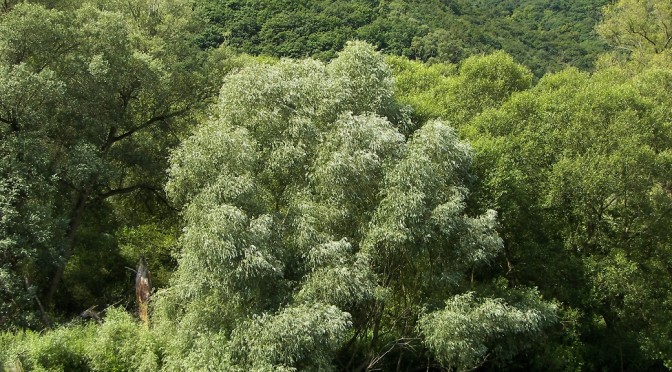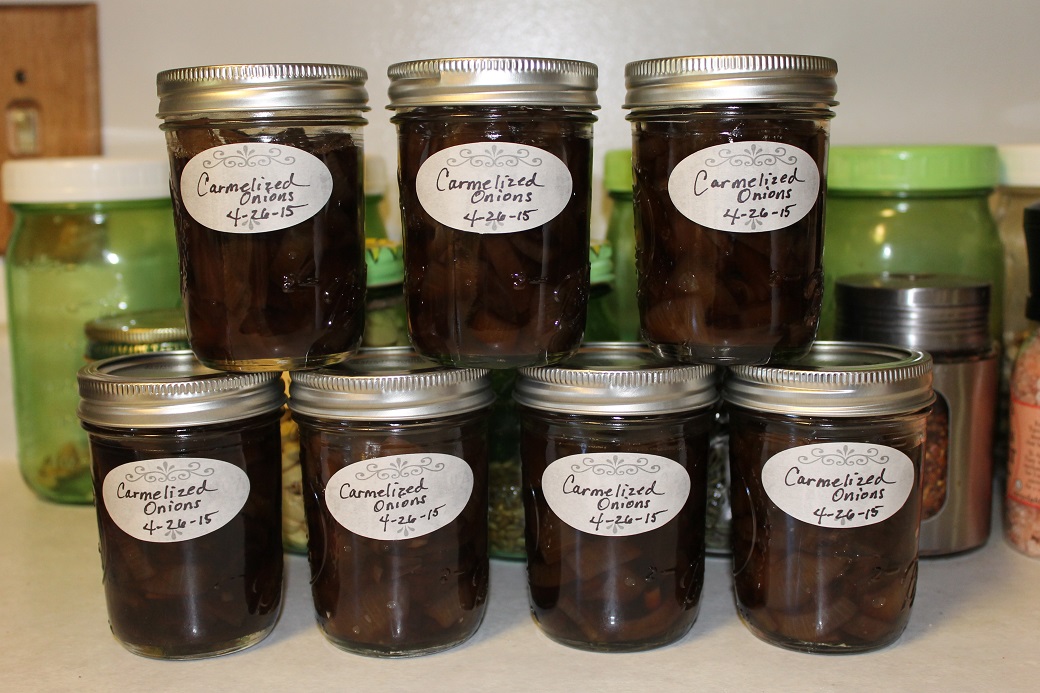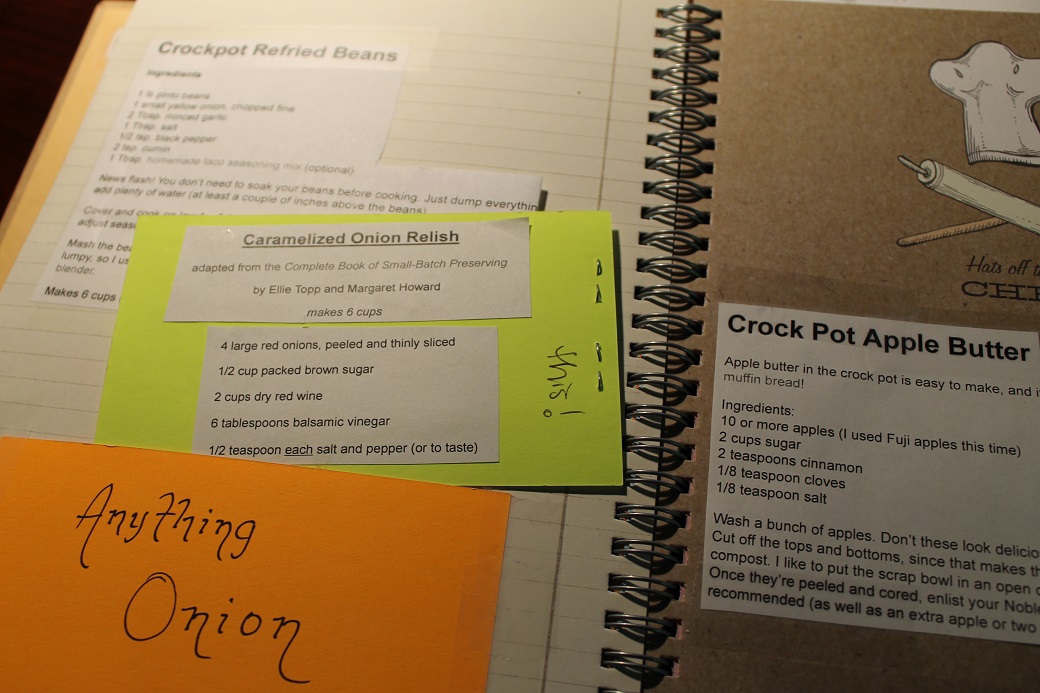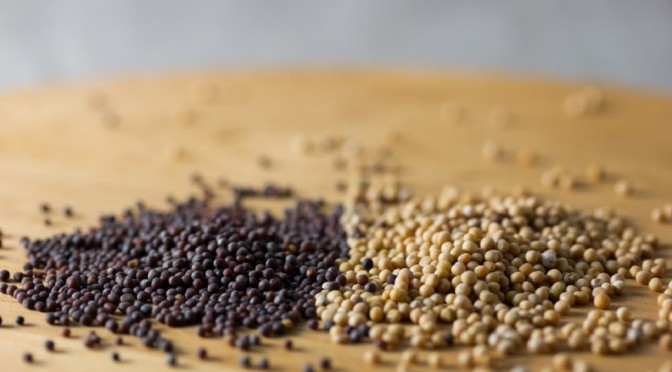From Mrs. Cog's Corner
The content on this page is for discussion purposes relating to health and well being only and is not intended to be medical advice. Links and sources provided are for informational purposes and do not represent an endorsement of a person, product or treatment.
Almost 2500 years ago Hippocrates, credited as being the father of modern medicine, documented the ability of willow bark to relieve pain and reduce fever. History reveals the medicinal use of willow bark even further back in time by the ancient Sumerians, Chinese and Greek cultures. So what did they know that so many of us have forgotten?
The bark from willow trees, particularly the white willow, contains salicin from which aspirin is derived. Modern pain relievers such as processed aspirin, acetaminophen, ibuprofen and naproxen are recognized as foreign substances by our immune system. While enjoying the effects of temporary relief from pain and inflammation, there is a long laundry list of potential nasty side effects.
Contrarily, a simple cup of willow bark tea is quick and inexpensive. Barring an allergy to aspirin products or a potential conflict with prescription meds, it is purportedly free of side effects when consumed in moderation.
A few years ago, the idea of drinking willow bark tea would have left me laughing. I don’t care for the taste of most “tea” and the idea of drinking tree bark would have sounded bizarre. But I now find the pleasant flavor an inexpensive natural solution and another great alternative to add to our natural 'medicine' cabinet.
I found several natural online health stores who carry white willow bark, often sold by the ounce. Investigating further I discovered most retailers use either the Frontier or Starwest brands. These can usually be bought in bulk on Amazon for under $15 per pound.
Making a cup of any herbal tea is very easy (provided you don’t have to engage in mortal combat with the Keurig coffee machine for a hot cup of water.) We use stainless steel metal mesh balls which can also be purchased on Amazon, or individually for less than $3 each at a local Walmart.
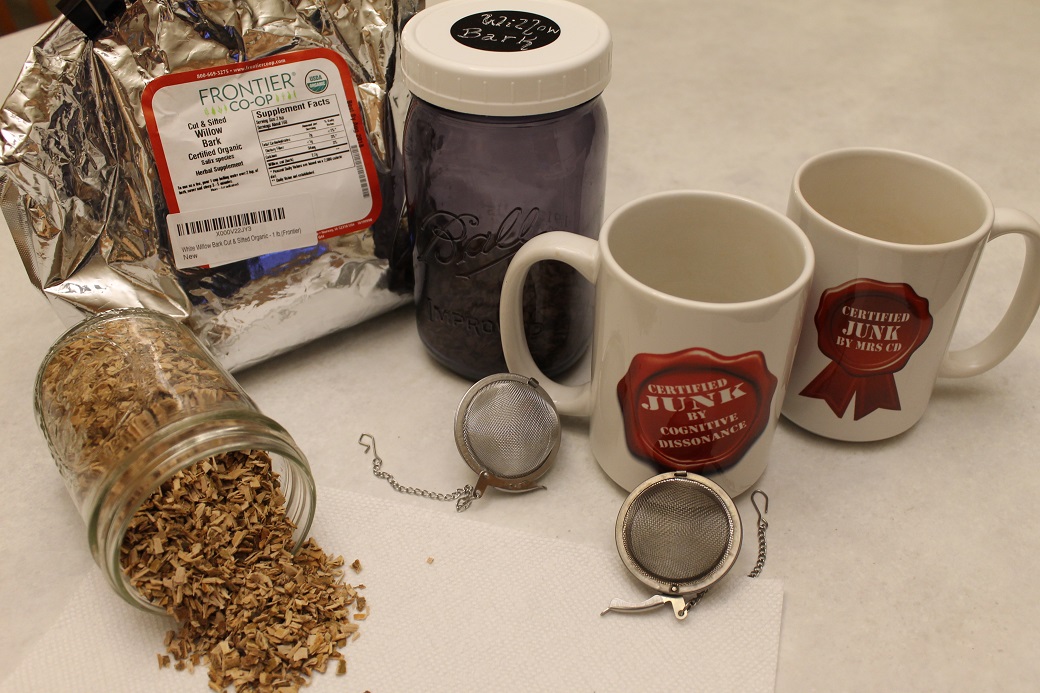
Preparing a cup of tea simply involves filling half of a mesh ball infuser with willow bark and submerging it in a cup of hot water. Within minutes the willow is diffused into the water for a mellow tasty remedy. We use this diffusing process to make many other types of herbal teas each day as well.
Recently, while talking to a shop owner of one of the more local natural health stores, I was informed not only was white willow bark tea amazingly quick and effective, but she had heard simply leaning up against a willow tree for a time could bring cathartic results. :-)
If you are concerned with the effects to your body over time from the prolonged use of manufactured drugs, or the rising cost and availability of basic necessities such as non-prescription pain relievers, white willow bark presents a viable and effective alternative.
On another note, I have just made the most awesome discovery about willow bark tea. I am reading it is a wonderful rooting hormone to use for propagating plants. Over the past few years I have attempted to grow new plants by snipping clippings from large blueberry bushes, kiwi vines and ornamental cherry trees. Some have been successful, some not.
Based upon my research it seems the primary reason cuttings will not propagate in an organic environment is because the cuttings fall prey to bacteria and fungi before being able to form roots and grow. The same natural substances in willow bark that are beneficial to humans also protect the new potential plants and give them a fighting chance to develop.
Last week Cog cut down a Kwanzan cherry tree in our yard which was deteriorating rapidly from a disease causing it to rot internally. Just before he took it down, I cut handfuls of new shoots growing from its large root beside the trunk. I now have half of them in water and half in willow bark tea to see if there is indeed a noticeable difference. In the springtime, I shall repeat this process with blueberry cuttings.
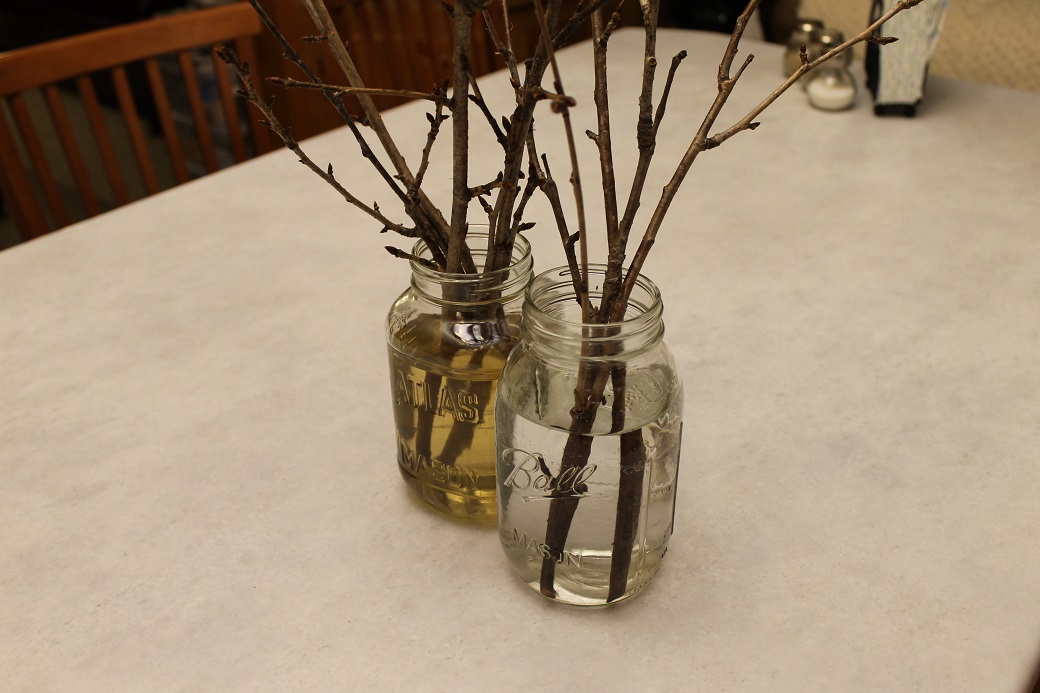
For further reading:
Willow bark is used to ease pain and reduce inflammation. Researchers believe that the chemical salicin, found in willow bark, is responsible for these effects. However, studies show several other components of willow bark, including plant chemicals called polyphenols and flavonoids, have antioxidant, fever-reducing, antiseptic, and immune-boosting properties. Some studies show willow is as effective as aspirin for reducing pain and inflammation (but not fever), and at a much lower dose. Scientists think that may be due to other compounds in the herb. More research is needed. https://umm.edu/health/medical/altmed/herb/willow-bark
The chemical constituent in white willow that is credited for it’s therapeutic benefits is salicin. All willows contain the glucoside, salicin, which is converted to salicylic acid in the body. However, not all willows contain salicin in amounts sufficient for pain relief. The Purple Willow contains the highest concentrations of salicin, with white willow having the next highest concentration, and is more effective at reducing fever than the white willow. White willow is preferred for remedies, however, because it is more palatable than purple willow. A blend of these two willows would make a fair compromise. http://www.herbwyfery.com/white-willow-bark/
In one well-designed study of 200 people with lower back pain, participants who took white willow bark “experienced a significant improvement in pain compared to those who received placebo.” People who took 240 mg of salicin had better results than those who took lower doses of 120 mg. In addition, the popular Dr. Mehmet Oz has recommended white willow bark extract for sciatic pain (symptoms including pain that may be caused by general compression or irritation of one of five spinal nerve roots that give rise to each sciatic nerve). http://undergroundhealthreporter.com/white-willow-bark-benefits/#ixzz3vq5bfxF4
Check the label on most commercial rooting hormones and you will find a warning label that cautions not to use the product on food plants, do not dispose any excess rooting hormone in areas where it can contaminate water supplies or soil, and it should be treated like a bioactive chemical and disposed of in a solid waste facility. The fact that these products are chemical hormones tells us we don't want to handle it or introduce it into our organic gardening environment.
But there is a natural, easy to make and effective alternative to chemical rooting hormones and it's called "Willow Water". Willow Water is a homemade tea that can be used to increase the growth of roots on plant cuttings. Willow water is made from the twigs of any tree or shrub in the willow family. http://www.windcrestorganics.com/WillowWater.html
Higher than necessary hormone concentrations kill stem tissue. Willow (Salix spp.) “tea” gently promotes fast rooting naturally. Strip the leaves off of thick willow stems and cut them into 1-inch chunks. Cut the chunks lengthwise, or smash with a hammer, to expose the inner wood. Pour boiling water over the wood and allow it to stand in a covered jar overnight. The wood can also steep in tepid water for several days or weeks. The brewed tea contains the hormone IBA, notes Ohio State University Extension. Dip freshly cut cuttings into the tea for several seconds or up to several hours. Prepare quantities of willow tea to water newly established plants or nursery transplants. http://homeguides.sfgate.com/homemade-rooting-compound-plants-38260.html
